Interview: How Daniel (E-)Berger started a revolution at DT Swiss
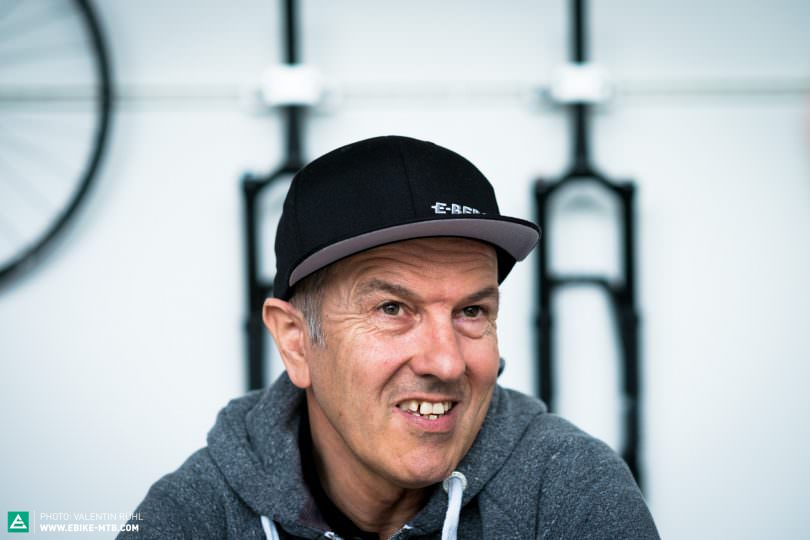
Marketing is all about superlatives. New products are hyped with World Championship titles, race wins and pushy slogans. Yet quiet and unassuming Daniel Berger seems somehow at odds with the image of a poster-boy for marketing. Sitting down with him at DT Swiss’s HQ in Biel, it turns out his story is as authentic as himself.
It’s not surprising that Daniel Berger isn’t a household name. The 52-year-old Swiss prefers to keep a low profile. Yet with his role as Vice President Sales and Marketing at DT Swiss he’s amongst the most influential people in the business. He’s the guy responsible for determining which products go into development at DT Swiss, and how they’ll be marketed. In fact, you could argue he’s responsible for everything that relates to us as consumers.

For many, the hype surrounding E-MTBs can seem a little artificial; as if people’s desire to cut a slice of the e-bike pie has eclipsed any real convictions. Yet Daniel Berger is different. His eyes take on a real glint of excitement as soon as we touch on the topic of E-MTBs. It goes beyond being his preferred way to spend his free time, as he channels his passion into his work too. In his first season with an E-MTB, he scaled the height of Everest no fewer than 12 times. At work, he’s been dubbed E-Berger, a nickname he wears with pride. When we met him at DT Swiss’s HQ in Biel, he sat down with a warm smile to talk e-bikes, exertion and revolutions.
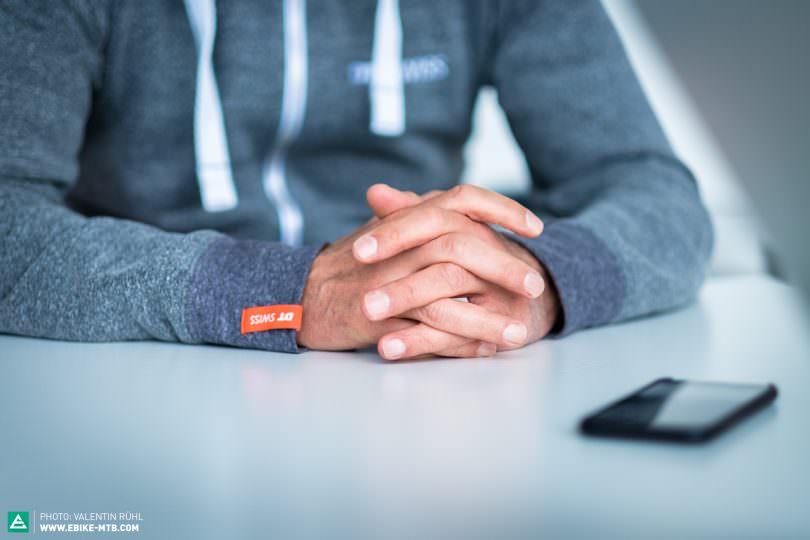
DT Swiss is considered one of the industry’s most influential wheel building brands. What sets you apart from the rest?
We’re very focused on quality, and this is something that we pursue across our whole range. We began with mountain bikes – a sector in which we’re really strong – but we’ve also developed into other areas. Right now one clear objective is to be equally as competitive in the road bike sector, and we’re covering the whole spectrum there. We’ve also really recently begun work into E-MTBs, where we see a lot potential.
You’re considered the brand’s main e-mountain biker, so how did you get into the sport?
I grew up with road and mountain bikes so I wasn’t that interested in the topic at first; I thought that e-bikes were just for riding around towns. Then back in October 2014 I had a chat with Thomas Pressl, the product manager at KTM, during the OEM fair, Taichung Bike Week, and he really piqued my interest. After two or three beers, he’d persuaded me and I ordered two KTM E-MTBs. I eventually took delivery of the bikes in February 2015 and I couldn’t wait to get out on a ride. The ice had finally been broken!
Suddenly I could go out on big rides again and do those huge climbs that had become quite hard work, and now they were fairly easily again. I could actually ride with the really fit younger guys once more, and I was totally hooked from the start. It didn’t take long before I realized that this could be something really interesting for DT Swiss too. We usually price ourselves out of urban riding, but E-MTBs were just on the way up and I really wanted us to be at the front of the pack.
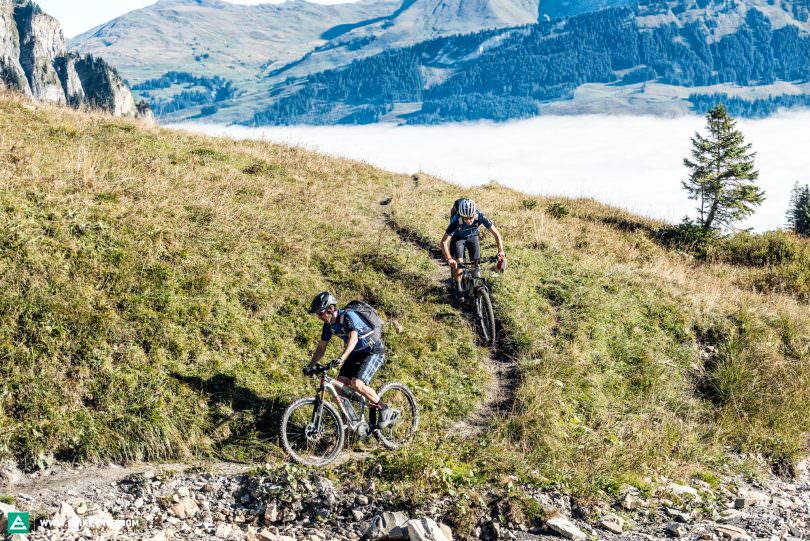
Now you’re part of the management team at DT Swiss, but what was your position before you stepped up?
I studied business management near Bern and that was where I discovered mountain biking. In 1986 I got my first Specialized Stumpjumper, which was a revolutionary back then – that was when I knew for certain that I wanted to work in the bike industry. When I joined DT Swiss in March 1995, I was only their 28th employee. I was mainly responsible for sales, and then moved onto leading that department. Back then you basically did everything on your own: product management, marketing etc, we all chipped in as all-rounders. Everything was ‘klein aber fein’ as we say in German – small but perfectly formed. We were making around 4 to 5 million Swiss francs per year. These days we’ve got 800 employees across the globe. Seven years ago I took over responsibility for all the products and the marketing, and I still work a little with sales and distribution.
Have you kept your initial excitement with E-MTBs?
Definitely! In 2015 I clocked a pretty insane yearly total of 100,000 metres of climbing and 3,500 kilometres, which are figures I could only have dreamt of in recent years. The opportunities for people like me living in the Alps are massive. Suddenly I was able to do proper mountain rides and really push myself without immediately needing an oxygen tent. Instead of needing three or four days to recover, I can get out on a ride the very next day.
I realized how massive this topic could actually be. My situation isn’t unusual; so many of us started riding 30 years ago, but work or your body’s limitations then end up stopping you from doing the same. But then suddenly something pops up that you hadn’t considered possible. Throughout my first year [of E-MTBing] in 2015, I learned so much about the materials and technologies on e-bikes – but encountered a fair amount of issues.

Now you’re known at DT Swiss as E-Berger, where did this come from?
Well, now the subject here has become a little centered on me – but that was never my intention. I pushed the idea within the company really early on, although not everyone took it seriously straight away. But when you’ve been around as long as me you tend to stick by what you believe, and after six months it was clear to everyone that my intuition had been right. The hat I’m wearing now obviously isn’t my own design, but it was given to me by colleagues in a sales meeting after a speech I gave during the most recent EUROBIKE. I was a bit taken aback at first, but now I think what they’ve done is really cool.
You mentioned earlier that you’re now able to ride with riders on conventional mountain bikes, so do you often head out on group rides like that?
Every Tuesday evening I go out with a local group, a real mixed bunch. Most of them are really regular riders and in really good shape. In recent years it’s been pretty stressful, and the first half hour was usually hell. At my age I’ve turned into a bit of diesel, and it takes me a while to warm up and get into a pace. I realized that it wasn’t that much fun any longer.
Then I decided that either I’d just stop and ride at my own pace on my own, or I’d try it out with the e-bike. I wrote to the guys and they were really receptive to the suggestion so I’ve taken the E-MTB each time since. Of course, it’s not that challenging with an E-MTB so you ride a lot in the eco mode. And I don’t have any need to take drink or food, or anything really, so I can just really enjoy riding with the guys.

It almost sounds too idyllic to be true. Did nobody kick up a fuss at all that you’ve joined with a motor?
At the beginning they were skeptical, but that’s changing now. There’s a guy approaching his 50th birthday who wants to buy an E-MTB too. I always ride really sociably in the group, ride a lot in the pack and chat while riding. I think that’s really important to get their acceptance, as you can’t always ride up at the front. I’m certain that groups of riders will get even more mixed in the future. But one thing is for certain: I don’t just want to ride in the group, as that’d be too slow if I did it all the time.
So after hearing you can keep up really well on the climbs, how’s your E-MTB on the descents?
At the beginning I had to get to grips with its weight and didn’t feel quite at home straight away. After three or four rides I realized that I can ride an E-MTB with a lot more travel and much more aggressive tires. That’s what I’ve done and now I ride much faster and more confidently down descents than with my old bike.
You mentioned that you encountered a lot of issues with the bike. What do you see as the sticking points on E-MTBs?
That’d be primarily the drive, the chain, sprockets and chainrings, which were certainly vulnerable. The first motor [I had] was a Bosch Performance model, which was made quite rapidly and soon started to sound like a coffee grinder. But what I demanded of the motor was not really what it was designed for – I rode it with our forks and rear shock that we then analysed at the end of the year. You could notice the extra stresses on the e-bike very clearly. Brakes are another big topic; I’ve been through five sets of brake pads and one lot of discs in a year on my XT brakes, which is something I’ve never done before.
I didn’t have any actual problems with the wheels, but I could tell for certain that there would be problems in the long run under such force. The freewheel and bearings certainly suffer under such loads. Our wheels are developed and optimized for the various disciplines within mountain biking, but we’ve always got an eye on their weight and riding performance. They’re certainly not designed to be ridden how we ride our E-MTBs these days. At a top level, you’ve got a rider like me riding with 350 W, and then the motor brings out three times that figure in turbo mode. When it comes to torque, my peak may be 110 Nm, but add in the motor and you’re up to 170 – 180 Nm. Of course, these are just short bursts of high power, but all of these forces have to be dealt with.
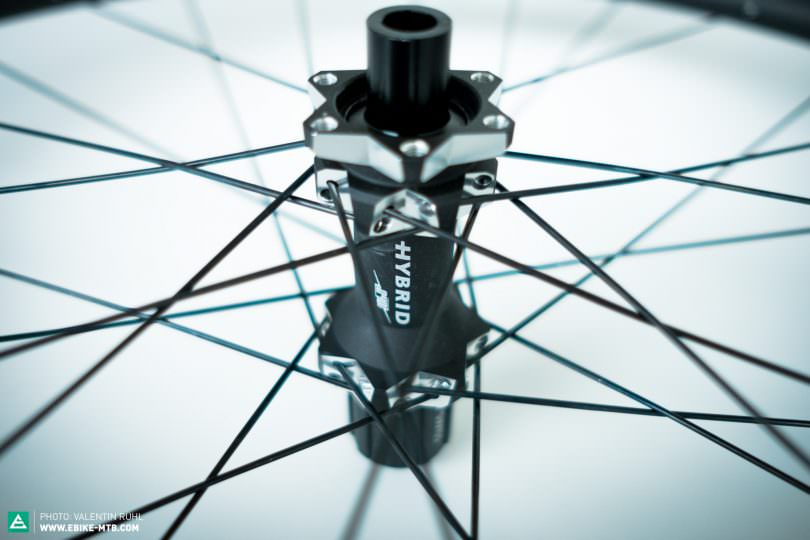
Considering these observations, what have you passed onto DT Swiss to aid the development?
With E-MTBs there are brand new loads and stresses that we wanted to tackle. We didn’t want to simply just change one part; we’ve had to completely rethink the wheel design, right through to the smallest part. The result is what you’re seeing today in the new HYBRID wheels: the hubs have been altered, thicker casing, ball bearings, a steel freewheel, optimized flange for 2.34er spokes, nipples, rims – everything has been redeveloped for the performance demands of E-MTBs.
The market group of more performance-focused E-MTBers is going to grow in the future, including people like me who’d like to carry on riding in the same way that they did on a non motorised bike before. The issue here is certainly the mileage over many years; it’s such a new scene that there’s very little experience so far. Maximum system weight is another big objective in our developments; up until now our wheels were specified for 110 to 120 kg, and now we’re up to 150 kg, which was important for many manufacturers. Our HYBRID wheels really represent the starting gun for a top product that’s capable of meeting the requirements of ambitious e-mountain bikers.
What E-MTB are you riding these days?
HI’m riding a Trek Powerfly with 2.8″ plus-size tires, 150 mm suspension and a Bosch CX motor. I always take a spare battery, even though most of the time I don’t need it. I just don’t want to have that extra concern, and then I can happily do the really steep climbs in sport mode, or even turbo mode. On my local loop I’ve got a climb with a 32% gradient in parts – with the E-MTB I end up feeling like Nino Schurter.
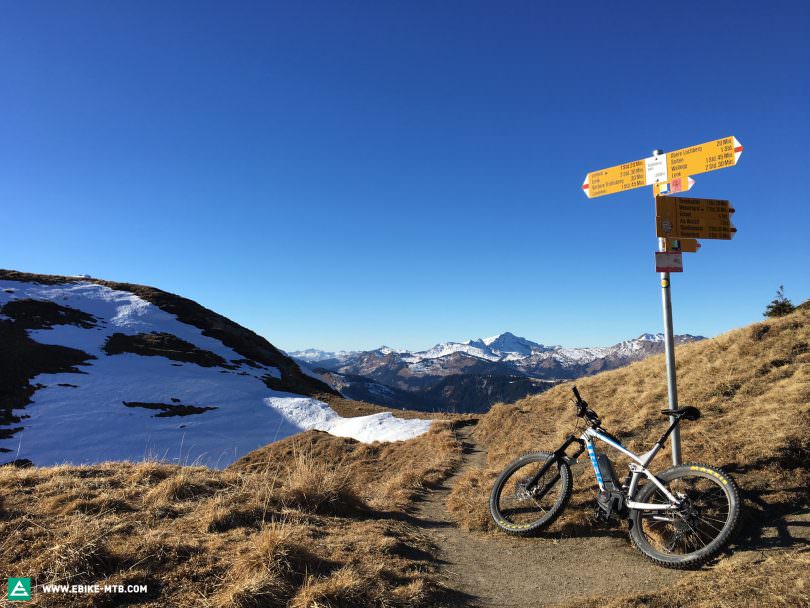
Where do you see E-MTBs in five years?
Good question. I’d never have predicted the growth to have been this fast, and that we’d see such a relatively large number of E-MTBs on the market. I can’t really say whether this upward tangent will continue in such an explosive manner, but I’m certain that it’ll continue and be sustainable too. I’ve been part of a lot of trends that have blown over fairly quickly, take windsurfing, for example. And while a lot of people say that 90% of current riders will be riding E-MTBs in the future, I think that’s farfetched. E-MTBs will certainly stake their place in the world, and the developments will keep coming. But as a bike manufacturer I certainly wouldn’t stop investing in developing non motorized mountain bikes – that’d be a dangerous move.
Huge thanks for this really open conversation, Daniel! Have you got any closing thoughts?
I’m really happy to be a part of this E-MTB subject. Twenty years ago I played a role in the first revolution and now I’m still involved in the latest revolution with our HYBRID mission. I find it incredibly motivating, and there’s a lot I want to do before my retirement. I’m excited to see how it will all develop.
Did you enjoy this article? If so, we would be stoked if you decide to support us with a monthly contribution. By becoming a supporter of E-MOUNTAINBIKE, you will help secure a sustainable future for high-quality cycling journalism. Click here to learn more.
Words: Photos: Valentin Rühl








